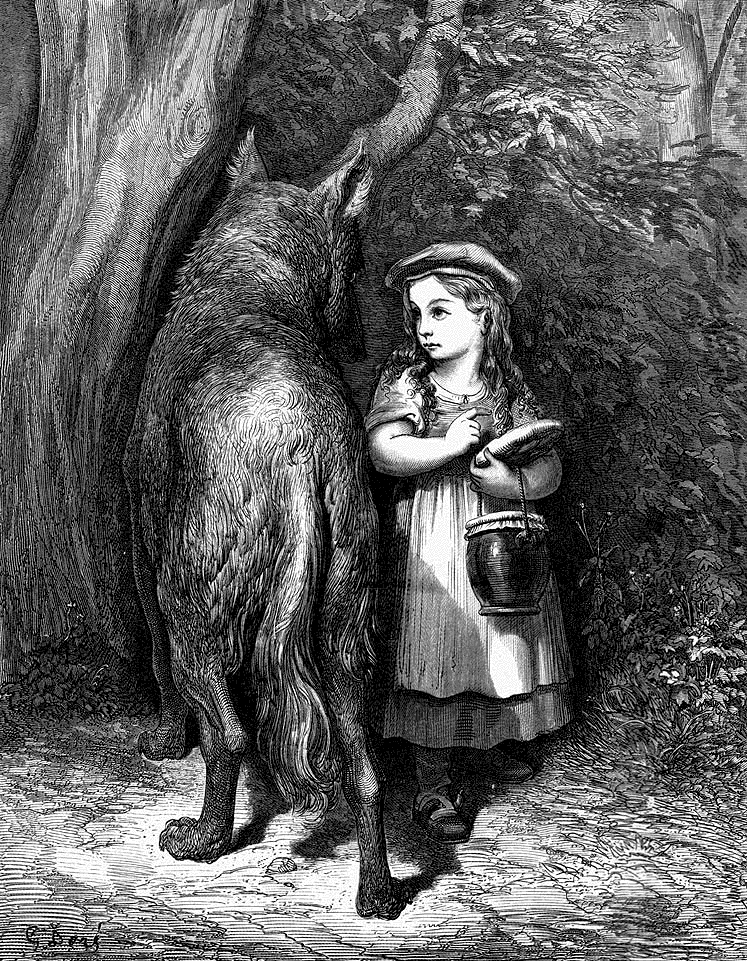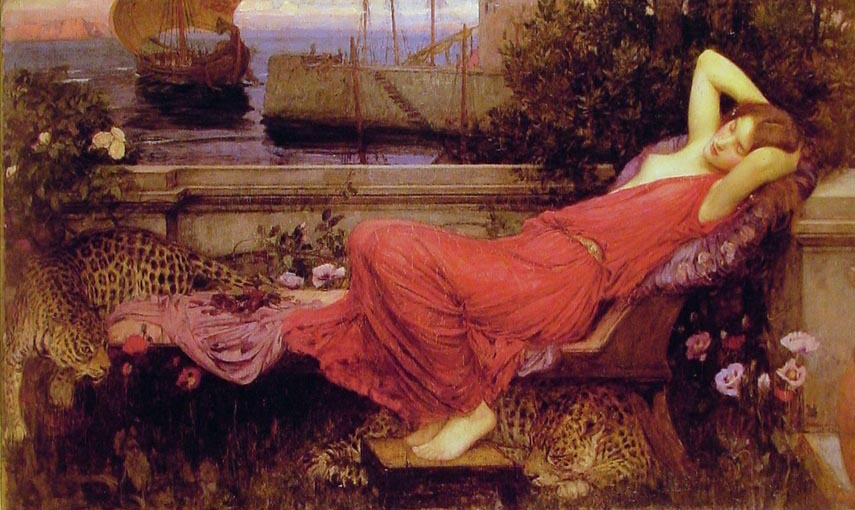I promote my redbubble shop on twitter. Specifically, I participate in #MythologyMonday, #FairytaleTuesday and #FolkloreThursday. This week’s #FairytaleTuesday theme was Red Riding Hood. It’s always been a favorite of mine, and I carry a good bit of Red Riding Hood art, from pre-Raphaelite to Golden Age artists. My biggest complaint about twitter is trying to compress information into what twitter allows in a tweet. Each character counts. This gets frustrating and really sort of kills the story telling cadence I want to get into.


First, a brief history of the tale. The first recorded version we have was a poem written down by a Belgian priest in the 10th century. In this version, a five year old child was wrapped in a red baptismal gown. A mother wolf carried the child back to her den to feed her cubs, but the cubs did not harm the girl. The child called upon God to save her, with the moral being that God soothes savage souls. Since then, various versions have been told. They usually go like this:
Red Riding Hood, named for her cloak, is sent with a basket of food to her grandmother’s. To get there, she must pass through the forest. Along the way, she meets a wolf, and tells him what she is doing. The wolf goes ahead of Red, eats the grandmother, and dressing as her, waits for Red Riding Hood to arrive. She does, only to find her grandmother in bed. The frail grandmother calls for Red to come closer and the obedient girl does. Red comments on how big her grandmother’s eyes are, and how big her teeth are, only to get eaten up by the wolf. Some versions end here.
Others continue with a huntsman coming along, slicing open the wolf, and saving Red and her Grandmother. Another version has Red running away. A washerwoman helps her escape by stretching a sheet over a stream and allowing Red to cross. However, when the wolf tries to cross after her, she drops the sheet and the wolf falls into the water and drowns.
In still other versions, before the wolf eats her, he prepares her grandmother in a stew and feeds her to Red. He then has her strip before getting into the bed with him. As she removes each piece of clothing, he tells her to throw it in the fire as she won’t need it any more.
There is one version that has echoes of both Red Riding Hood and the Three Little Pigs. That one is “The Wolf and the Seven Kids”. In this one, a mother goat must leave her seven children alone. She warns them not to open the door for anyone but her. The wolf comes along, but they won’t open the door. The wolf grows cunning and tricks the kids into opening the door, whereupon he promptly eats them. He’s so full he falls asleep by the stream. The mother goat comes home and is quite distressed to see what has happened. She cuts open the wolf’s stomach and rescues her children, replacing them with stones. The wolf wakes and goes to take a drink, but the weight of the stones pulls him under and he drowns.
Red’s age varies from a small child to a young woman, but most versions have her as a 12 or 13 year old girl. Red’s journey can be seen as a puberty rite. She begins as a child, but must pass through the dangerous forest of puberty to become a woman. Along the way she is met with sexual temptation and the possibility of rape. It’s a warning to young girls not to trust the men they meet, and not to trust appearances. The girl must learn this to become a woman. The red cloak can represent menstruation or sexual desire. This tale was a popular warning to well bred young ladies to guard their virginity, as it was necessary for them to gain a good marriage.
Red Riding Hood is certainly no anomaly. A thread of sex and violence ran through most if not all fairy tales before they were rewritten for children. Rapunzel was pregnant, Cinderella’s sisters cut parts of their feet off, Snow White was raped while unconscious, and her stepmother was forced to dance in red hot shoes until she died. The forgotten tale of Catskin involves incest. Bluebeard is about a serial killer and a bloody chamber full of dead women. Sleeping Beauty wasn’t woken with a kiss. She was woken to find she’d had twins in her sleep. This is what real fairytales are. They are full of horror and warnings and have been around for as long as we’ve had civilizations.

I’ve had a lifelong love affair with them. There is always more to learn. When I was eleven I found my first collection of original fairytales. I was in love with the 398 section of the library and had already gone through all the King Arthur books they had. Fairytales was on the bottom shelf below the medieval section, and I remember sitting on the floor, reading this thick old book. I was enamored with them from the start. I think the first one I read was Beauty and the Beast, and I remember being surprised at how much there was to it compared to the children’s books.
I’ve dressed up as Red Riding Hood a few times on Halloween. There are multiple songs with a Red Riding Hood theme that I love, and if you haven’t seen 1984’s “The Company of Wolves”, it’s a gorgeous, surreal and symbolic take on the story. It’s a character I relate to, but I think a lot of women do. On the occasions that Red saves herself, it is deeply satisfying. What she loses in innocence, she gains in courage.
Rosaleen meets the wolf












